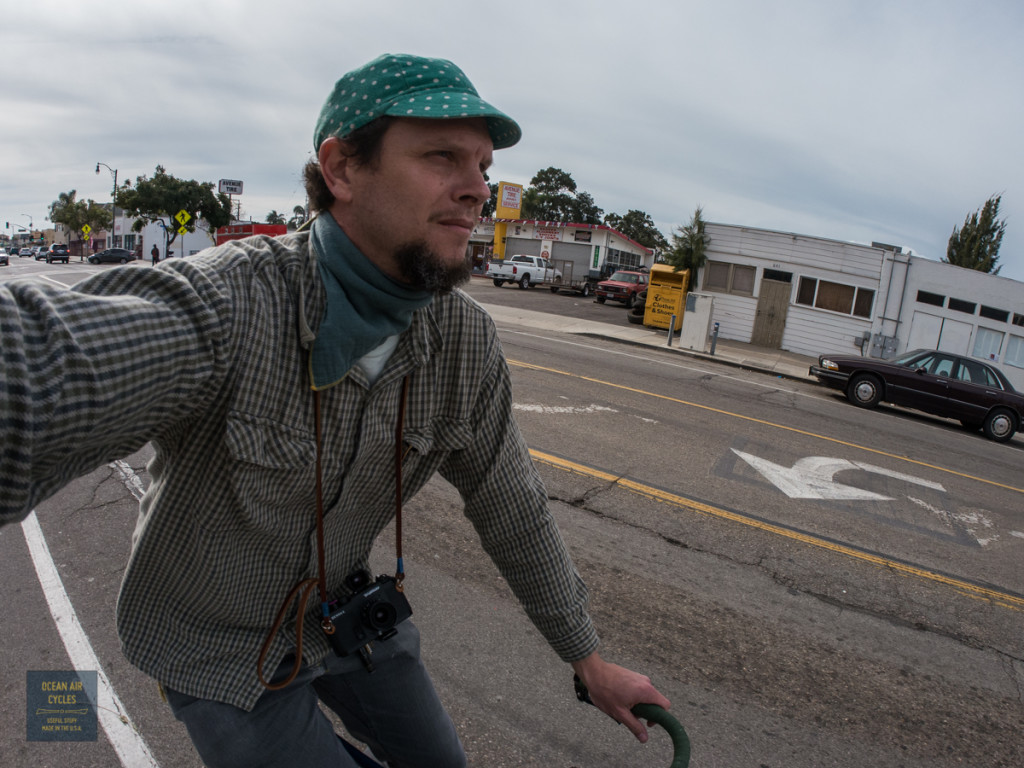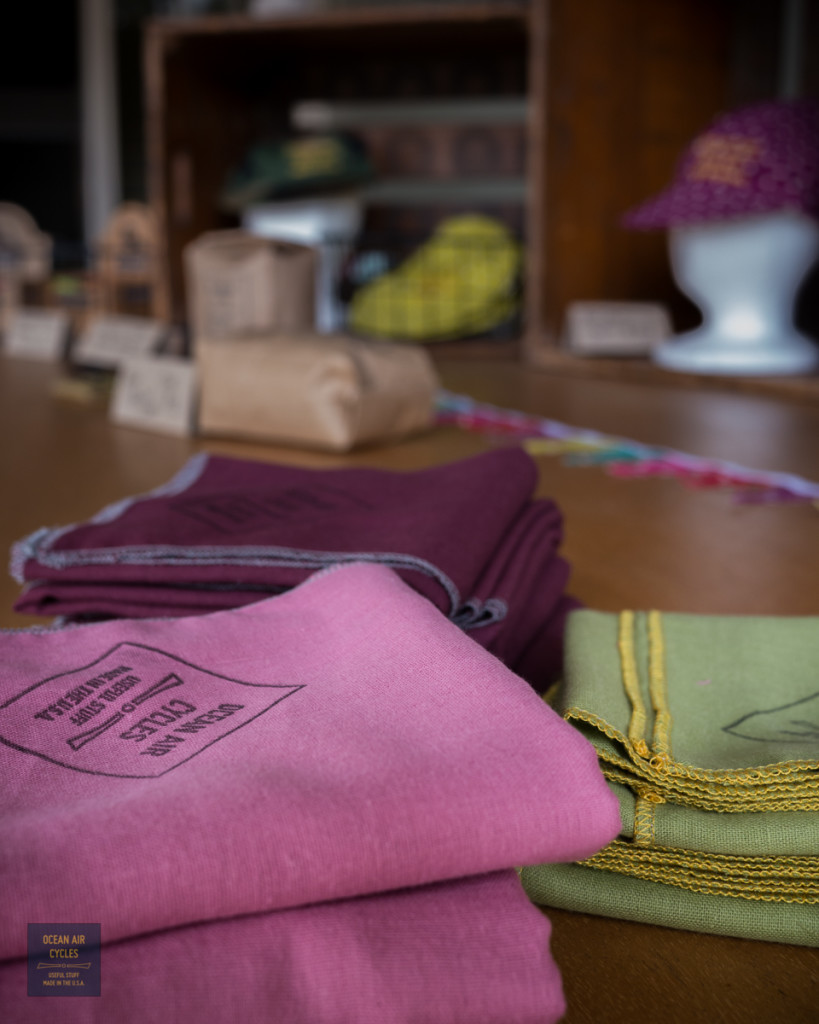Aside for the obvious style and fashion reasons, who the hell wouldn’t want to look like a cowboy or pirate? The Kerchief is a worthy tool to add to your daily wardrobe or every day carry kit. I personally wear one through a good bit of the year. The primary function is shelter for the midsection of your neck. In the summer, sun protection is the obvious reason. While a wet kerchief also provides evaporative cooling. For the hot days, a basic bandanna gets it done.
As the seasons cool it is not uncommon to see the masses move towards a scarf as part of the outdoor wardrobe. In Chinese medicine it is a pretty big deal to keep the neck and throat protected from wind to ward off colds and maintain health through the cooler months. Most scarves are bulky though, Not ideal for the bike rides and come off with the jacket every time you head in and out. But what else works to keep your neck covered in the gap area? The kerchief of course!
 Most of my Fall/Winter/Spring layering is set up to minimize the need to peel layers off and on as the day, stops and starts. Getting around town, many short to medium rides, in and out of shops, or in the shop etc.. We are pretty spoiled here in California with the weather, but things run on the cool side of temperate, often between 45 and 60 deg F. I layer with breathable natural fabrics that adapt well to the warming and cooling cycles of the day and activities. The layers increase and decrease as temperatures dictate, but the kerchief is there, the shield that otherwise bare stretch of throat and nape of the neck that the shirt collar misses.
Most of my Fall/Winter/Spring layering is set up to minimize the need to peel layers off and on as the day, stops and starts. Getting around town, many short to medium rides, in and out of shops, or in the shop etc.. We are pretty spoiled here in California with the weather, but things run on the cool side of temperate, often between 45 and 60 deg F. I layer with breathable natural fabrics that adapt well to the warming and cooling cycles of the day and activities. The layers increase and decrease as temperatures dictate, but the kerchief is there, the shield that otherwise bare stretch of throat and nape of the neck that the shirt collar misses.
A few years back I was looking for something more substantial than a bandanna, but not as bulky as a scarf. I started experimenting with neck gaiters made out of different materials, but found them a bit too confining in all but the coldest of weather. That said, on long cold and possibly wet rides, there is still one in the bottom of my Docena waiting to be called up for duty.
It was the exploration of materials for our caps that had me cross paths with the the materials known as double weave gauze. Two layers of gauze like cotton, bonded together in a grid pattern by a shared yarn. It offers all the ease of an old soft linen shirt, but doubled up into to layers building the loft, trapping heat between the layers. I started searching out samples and sewing up test pieces. Settling in on a 100% cotton material sourced from Japan, with a silky hand and slightly dense weave, our Double Weave Solid Kerchiefs were launched
 These are with me most days, if not around my neck they have been torture tested as lunch napkins, furoshiki insulation for lunch in a mason jar, snot rags for the kids, and on and on. The first ones I made a couple years ago have been though hundreds of machine washings and just keep getting better with age. This last summer they even outperformed my regular bandannas as evaporative coolers.
These are with me most days, if not around my neck they have been torture tested as lunch napkins, furoshiki insulation for lunch in a mason jar, snot rags for the kids, and on and on. The first ones I made a couple years ago have been though hundreds of machine washings and just keep getting better with age. This last summer they even outperformed my regular bandannas as evaporative coolers.
Strongly consider adding one or more to the kit this year. It may seem extravagant at first, but will quickly become part of your every day carry/or wear. Many of our customers start with one, then come back, and back again as gift season rolls around. I still cut and sew these myself in the shop. Stock is constantly being updated, and there will be a few new colors as we move into spring. Im looking forward to getting more of these out into the world in 2016.
As always, thank you for the support, that is what keeps this going.
Nice….yeah, who wouldn’t want to look like a cowboy or pirate. I’m not sure I could pull it off, but you look great wearing it.
Before people used the word handkerchief, the word kerchief alone was common. This term came from two French words: couvrir, which means “to cover,” and chef, which means “head.”
Casinos hate this slot. You’ll love it. Why?! Start Spinning Here -> tinyurl.com/yuw6g9qa